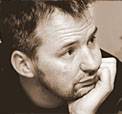Young Ingvar Kamprad used unexpected cash from his father – a gift for good exam results - to found IKEA. He lived near furniture makers so reacted by selling furniture. He reacted to a boycott from local rivals by producing his own furniture.
Kamprad's first designer reacted to not being able to fit a table in a car by creating the first flat pack. Then Kamprad reacted to his showroom burning down by building a huge replacement. He reacted to excessive customer demand by starting self-service. So the IKEA strategy came from clever reactions to great unplanned opportunities.
Unplanned opportunities may be your best chance of creating a great strategy so you need to be constantly looking for them. Evidence supports the idea that the most successful entrepreneurs and leaders are fantastic at noticing opportunities. And the greatest opportunities come from reactions to unplanned events!
- Does this problem let us start again and do it better?
- What can we do today that was impossible yesterday?
- Is our plan still working? How can we take advantage of events?
Any fool can produce a plan. The genius is in seeing how new events open up new possibilities for the old plan. Or even entirely new plans that weren't possible when the old plan was written.
The planner is continually sifting through events for evidence about how well the plan is working. He wants to see new opportunities for achieving his objectives. Or new objectives that were previously impossible.
Most corporations have an annual planning cycle. They spend some time (usually not enough!) thinking about what they want to achieve. They produce a document that lists a series of objectives, priorities, and even tasks. The moment the plan is printed it is viewed as complete.
Some people follow the plan. They pretend (or believe) that it's perfect. Some managers insist the plan is followed as a point of principle. The plan demands a response from senior executives, senior managers, managers, and professionals. Every level of the hierarchy produces their own version of the master plan – sometimes the process takes nearly a year of cascaded documents! So it's worth asking a few questions:
- What happens when the assumptions in the plan are wrong?
- How do employees challenge the assumptions in the plan?
- By the time the planning is complete, will the plan already be out-of-date?
Other people ignore the plan. They don't read it. And they certainly don't think it has anything to do with the day to day of their job. They may react to events but the way that they react to events seldom changes. They understand the limitations of plans – the contradictions, the ignorance and lack of specific detail. They don't understand the power of plans to shape responses to events.
The danger is following the plan too slavishly (without responding to events) will lead the company efficiently in the wrong direction. The right plan can be made wrong by events. The danger of not following any plan is that actions are out of step with each other, may stop any plan working or fail to improve the impact of everyone working together.
It's difficult for some people to accept that reacting (not just planning) is a good thing. Managers have been taught the value of being (or looking!) organised. They have learned that being 'proactive' is what the business world wants. They have been told that being reactive is a bad thing.
The good news is that openly discussing the benefits of reacting and the limits of planning is healthy for the business. There is something for everyone in the idea. It can bring together those who believe all plans work and those who believe that the day to day is all that matters. Both are right. And wrong.
Another practical challenge is making room for both kinds of strategy in the formal ways that your team or company is organised. Strategy is more effective if it is adapted throughout the year. Some of this is adjustment in the way that the strategy is executed. Individual managers and colleagues figure out how to react to circumstances in order to deliver the official plan.
But some changes to objectives, plans, and direction benefit from being brought back into the formal strategy. It's a way of acknowledging that has changed. It's a method for encouraging effort to be focused on new opportunities. It can reduce the negative impact of too many alternative approaches. And it's a lot more effective than simply planning, closing your eyes, and waiting for the results at the end of the year! You'll know that you're getting better at reacting (not just planning) when you find that some of the greatest achievements of the past year were not part of the plan at the start of the year.
Your approach to planning will be more fluid. You will include options for moving in other directions if circumstances change. You will examine what if scenarios while planning. You will become smart and fast enough to recognise a fantastic new opportunity (or an awful new threat) while there is time to react intelligently. And use them to better achieve your ambitions.
You will make 'fire-fighting' part of your strategy. And you will include more of the people who do the reacting on a day to day basis. Middle managers, supervisors, and people working at the front line – they can all help to recognise a need for clever reactions to real world events and circumstances.
Careful though because reactions to situations can be counterproductive. Unplanned actions can work against the strategy. People can make ad hoc decisions that make sense to them but not to the bigger picture. Or many unplanned actions can make sense individually but not together. The point here is not to encourage excessive chaos. Instead you want channelled initiative and creativity.
